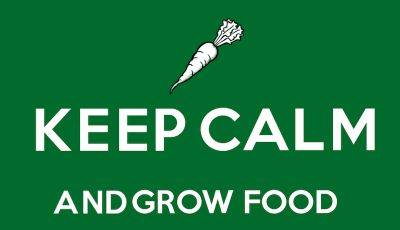February is the month when the keenest gardeners really get going, sowing seeds into heated propagators indoors, perhaps even rigging up the grow lights. They’re aiming to give their tender veg (tomatoes, aubergines, chillies and sweet peppers, for the most part) the longest possible growing season, and to have the earliest crops.
February Ideas, Tips & Guides
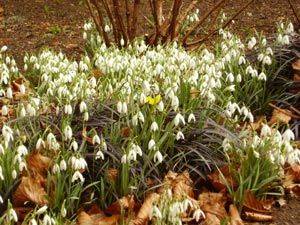
Help with February Gardening Jobs
There are numerous jobs to start in February and most gardeners will be very busy. Perhaps too busy to read this article. Still Gardeners Tips tries to help new and experienced gardeners with a series of tips and job lists that should save time in the long run.
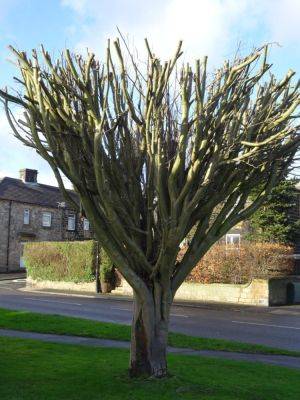
Extreme Pruning Trees in February
The extreme sport of ‘extreme pruning’ has just missed out on an award for this effort on an open planned garden tree in Yeadon. It will be revisited as it buds and leafs up later in the year. At the moment is strikes an interesting pose.
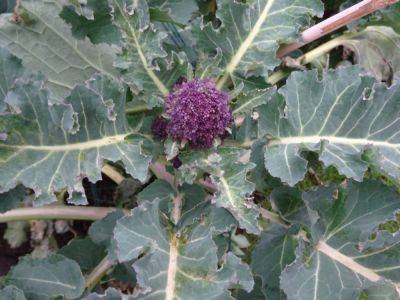
Heart of the February Veg Plot
Purple sprouting broccoli is coming along nicely. It has been occupying the ground for quite some time and has a lax habit needing more space. The old sprout stalks are ready to be dug out (they are too firmly in the ground just to pull out). They take less space and produce more food per square yard than broccoli which is consistently good at our greengrocer. A tip for this years growing plans – more sprouts firmly planted and well staked.
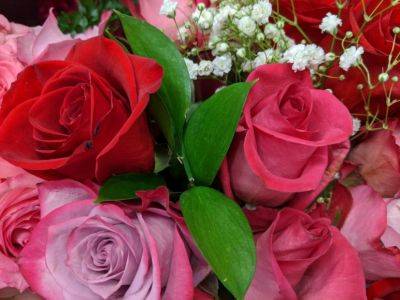
February Week 4 Garden Photos
“Of all the flowers, methinks a rose is best.”
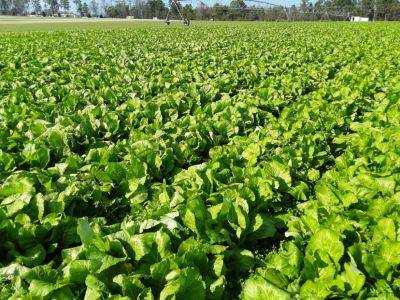
SC Fruit & Vegetable Field Report – February 15, 2021
Zack Snipes reports, “I haven’t been out in the fields lately due to all of the rain. Hopefully, it will dry out some this week as we really need some bluebird sky days. If and when you are able to get out in the strawberry fields, it is time to put out boron. Boron helps with flower and fruit development. If you miss this application, you will have lots of “bull nose” fruit in a few weeks. We recommend 1/8 lb of actual boron. Please see the picture for calculations of different products. Be extremely careful with mixing, calibrating, and applying boron as boron is a great herbicide if overapplied. Boron can be sprayed or run through the drip system.
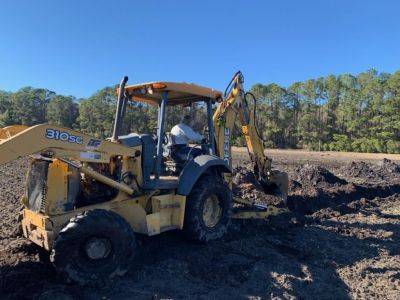
South Carolina Fruit and Vegetable Field Report February 1, 2021
Rob Last reports, “Strawberry crops are developing well; however, we are seeing gray mold phomopsis blight in some crops. Sanitation can really help prevent botrytis from spreading as we move forward when allied to fungicide applications. Keep scouting for spider mites as there are active populations in some crops. Now is a great time of year to think about the maintenance of equipment for bed formation, cultivation for spring crops, and most important product application.”
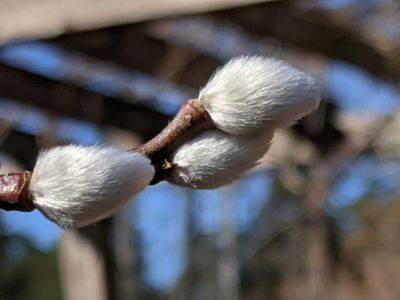
February Week 2 Garden Photos
“Beauty surrounds us, but usually we need to be walking in a garden to know it.” ~Rumi~

February Week 3 Garden Photos
It’s camellia time at the South Carolina Botanical Garden!
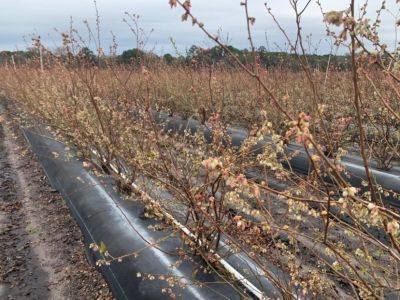
SC. Fruit and Vegetable Field Report February 22, 2021
Zack Snipes reports, “Another rainy, wet, and cold week last week. Some sunshine and warmer temperatures are coming this week. All of our fruit crops have received their chill hours and are just waiting to burst out for spring. I expect to really see fruit crops take off this week. Make sure that you have a fertility plan for the spring crop. Don’t let your crop be without fertility at the critical moments. For more information on fruit fertility, visit https://smallfruits.org/ipm-production-guides/. For smaller farms, Clemson’s Home Garden and Information Center is a wonderful resource as well.”

Forget the Hearts and Chocolates; February is for Pruning!
While romantics look to mid-February as a time to impress their favorite Valentine with chocolates and flowers, experienced gardeners know now is time to show their plants love through careful pruning! In a recent blog, Kerrie Roach discussed fruit tree pruning. Here, I will concentrate on ornamental landscape plants. While it is time to prune many plants, as usual, there is an exception to the rule. Do not prune plants that flower from late winter to mid-May, such as azalea, forsythia, and weigela, in winter. Gardenias also fall into this category but don’t bloom until June. Pruning now removes flower blooms resulting in a sparse spring floral display. Wait until after these plants complete flowering this spring to prune. For an extensive list of the optimal pruning times for individual plants, visit HGIC 1053 Pruning Shrubs.
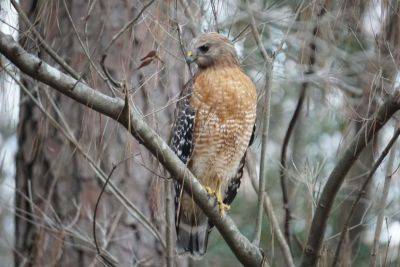
February Week 1 Garden Photos
A winter’s day walk in the South Carolina Botanical Garden. Walk quietly and softly, and you’ll be amazed at what you see.

February 14 Week 2 Garden Photos
A February Stroll Through the South Carolina Botanical Garden
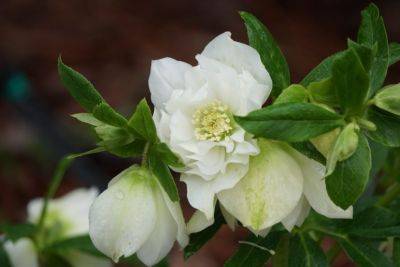
February 28 Week 4 Garden Photos
Hellebores Brighten Up A February Garden

February 07 Week 1 Garden Photos
Brighten Up Your Home With Houseplants: Part 2
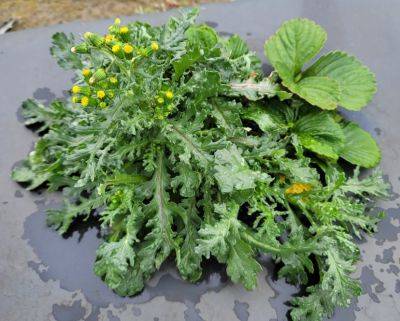
SC Fruit and Vegetable Field Report – February 7, 2022
Zack Snipes reports, “Now is the time for Lowcountry strawberry growers to give their plants the first shot of boron. Boron helps with both flower and fruit development. Growers can spray boron or inject it via the drip system. Boron deficiency will show up in your fruit if you skip out on the application. Now is the time to get it out because plants will be pushing blooms soon, and they need the boron available to make nice, pretty flowers and fruit. A boron application takes only a few minutes and literally a few dollars but can keep you from throwing away thousands of misshapen or “bullnose” berries. NOTE: Boron is a great herbicide if overapplied, so make sure you put out the right amount by using the information from the picture below. We only need to put out a tiny amount, but that tiny amount makes a big difference.”

SC Fruit and Vegetable Field Update – February 28, 2022
Tom Bilbo, Extension Vegetable & Strawberry Entomologist, reports, “As temperatures warm up in some areas, make sure to scout for spider mites in strawberries. Spider mite feeding on plants early in the spring before plants start fruiting can result in significant yield reductions later. Plants can tolerate much more spider mite feeding once harvesting begins, but protection at earlier stages is critical. It is also much easier to get good management when you suppress mite populations early in their population growth before their numbers start taking off. It is recommended to treat pre-fruiting strawberry plants at a threshold of 5 mites per leaflet (one-third of a leaf). Scout for mites by sampling at least 10 leaflets per acre, collected randomly throughout the area and taking an average of the mite numbers. At this time, it is best to use a miticide that is effective against all life stages (eggs, larvae, and adults). Achieving good mite management at these early stages can keep you in the clear for the remainder of the season.”
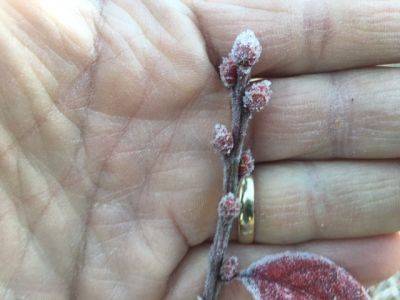
SC Fruit and Vegetable Field Report February 14, 2022
Rob Last reports, “Strawberries in the area look good, with some new leaf development emerging from the crown. Boron applications are being applied, either as a foliar application or through the drip system. Remember, we are looking to apply 1/8 lb. of boron per acre. Over application of boron can be phytotoxic and detrimental to the plants. Plans are also being made to begin fertigation applications later this month to aim for the first pick in early April. The initial target is to apply 5.25 lbs. N per acre. After the first application, a tissue test should be taken to refine fertility recommendations further. Please also remember we have the drip fertigation calculator to make the calculations more straightforward. Brassica transplants are going in the ground this week and are looking good. The pruning of peaches and perennial fruit is pretty much complete, and we await the arrival of spring.”
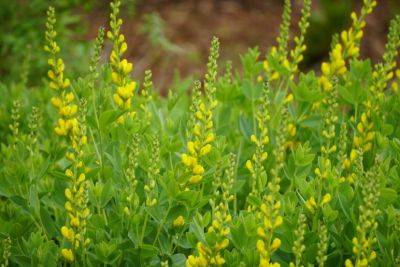
February 06 Week 1 Garden Photos
Perennials Native to South Carolina, Part 2
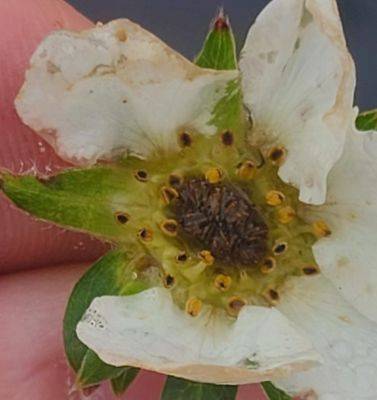
SC Fruit and Vegetable Field Report- February 6, 2023
Guido Schnabel reports, “The new year started with a disappointment and scare for some strawberry growers. Stunted plants, gaps in the strawberry rows, and leaves dying. The extent of the damage is yet to be determined, but it will be substantial. Most of the affected growers received the plants from the same nursery source, and it is very likely the problem is nursery derived. After talking to growers, meeting up with agents, and collecting samples for problem ID at the Clemson University Plant and Pest Diagnostic Clinic, the verdict is out. Gnomonia leaf blotch (Gnomonia comari) was the main cause of older leaf decay stunting many plants. This fungus is not known to be an aggressive pathogen but can, in some instances, break out in nurseries and continue to do harm on transplants after planting. The disease should start to fade in the spring as the weather warms up, together with sanitation and regular fungicide applications. Some plants at the same location did test positive for Phytophthora and the relatively harmless Pestalotiopsis, and by now, we all know there is a new aggressive species out there (Neopestalotiopsis spp) that can devastate production. We are lucky to have a diagnostic clinic that now offers a molecular test for distinguishing the mild from the aggressive Pestalotiopsis species. This molecular testing verified most farms do not have the aggressive species. We do have ONE Neopestalotiopsis-positive farm, however, and we must hope that sanitation, aggressive and strategic fungicide applications, and a dry spring/early summer will help to mitigate the damage.”
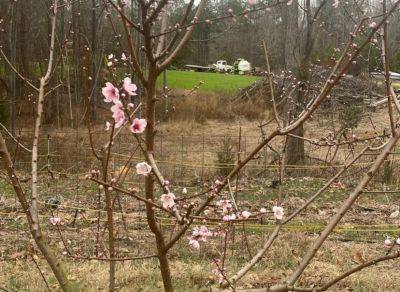
SC Fruit and Vegetable Field Report – February 13, 2023
Tom Bilbo reports, “When scouting strawberry fields for spider mites, also keep an eye out for naturally occurring predatory mites, such as the [potentially] highly effective specialist predator Phytoseilus persimilis (see picture). Sampling conducted in spring 2022 across Lowcountry strawberry farms detected this predator in all six fields sampled; however, in most cases, they appeared ‘too little, too late’ to suppress spider mites in a timely matter. Purchasing and releasing predatory mites can be a very effective approach, but most research to date has been conducted in the large strawberry systems of CA and FL. This spring, I am initiating research on how to release predators in SC strawberry fields to determine an approach that is both effective and economical. Whether predatory mites are naturally occurring and/or released into fields, the single most important factor in their success is the use of compatible insecticides. Pyrethroid insecticides (IRAC group 3) are highly toxic to predatory mites and are virtually guaranteed to kill them in your field. If needed, apply instead any number of the much more selective acaricides available that have been shown to be compatible with predatory mites, including the active ingredients bifenazate (Acramite), cyflumetofen (Nealta), and abamectin (Agri-Mek). Once the research is conducted for SC strawberries, I will write a separate post specifically outlining how to utilize predatory mites. Until then, you can find more information on predatory mites here from my research in NC tomatoes.

SC Fruit and Vegetable Field Report – February 20, 2023
Tom Bilbo reports, “If you’re growing strawberries in the warmest parts of the state and you haven’t been checking and/or spraying your fields for spider mites, you’re going to want to. Last week my team and I sampled 8 strawberry fields throughout the Lowcountry and Midlands. Nearly all fields in the Lowcountry had either high or rapidly building mite pressure. We saw lots of spider mite eggs that are all going to hatch this week as the mites soak up the warm, dry weather. Fields in the Midlands looked much better (but this could change in a week or two). Spider mites either hadn’t established yet or had recently established and were still highly aggregated in ‘hotspots.’ We did detect beneficial predatory mites at two locations, so if you want these predators to help you in managing spider mites, stay away from applying bifenthrin and instead use a miticide that is much more compatible with the beneficials. Look at the2022 Strawberry IPM guide (pg. 29-31) for a full list of recommended miticides for both conventional and organic systems.”

February 27 Week 4 Garden Photos
Spring Is Fast Approaching at Crooked Trail Farm.

SC Fruit and Vegetable Field Report– February 27, 2023
Rob Last reports, “After a warm week in the Lowcountry, we received some welcome showers. The rainfall will aid in cultivating and bed formation for spring crops. Beds should be firm, level, and well-consolidated with a clearly defined shoulder. These factors will aid in fertigation operations and plastic laying. Remember that a well-constructed bed should display an indentation of 0.5 to 1″ when a 150 lb. person stands in the center of the bed. Last week’s warm weather has pushed crops, with strawberries, blueberries, and peaches coming into flower. Spider mites are being found, particularly in strawberries. Vigilant scouting and applications of mite-specific products will likely be necessary. Again with strawberries, we see fruit set and development. Disease pressure currently is low, but we will see gray mold developing.”
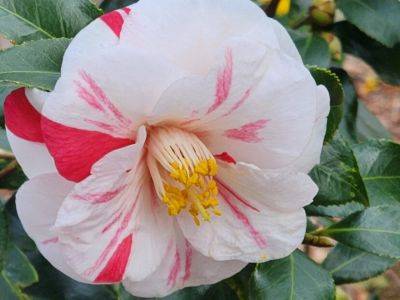
February 21 Week 3 Garden Photos
See What’s Blooming at Crooked Trail Farm This Week!

February 13 Week 2 Garden Photos
Beautiful Native Shrubs and Vines for South Carolina Gardens

My february 2010 garden chores
OR TRY THIS ESCAPE: Force branches of spring-blooming shrubs and trees like pussy willow, forsythia, apple and cherry once buds have begun to swell. Cut on an angle and put indoors in water. I submerge them overnight, then place them in a bucket of water in my mudroom, draped with a plastic bag, until the buds push off their coverings. The closer to actual bloom date you try to force things, the higher the success rate (no big surprise).COLORFUL TWIGS from shrub dogwoods and willows would make good indoor arrangements now, and many want stooling (cutting to maybe 8 inches from the ground) every other or third year.TAKE A WALKABOUT, unless the ground is muddy (I don’t walk on sodden soil; it does such damage). Check to see if mulches are in place or if they’ve heaved, or if burlap and other protectors have come loose, exposing vulnerable plants to possible heaving damage or windburn.MOLE PATROL CONTINUES, in perpetuity: I am still re-baiting mousetraps under boxes, buckets or cans in the gard
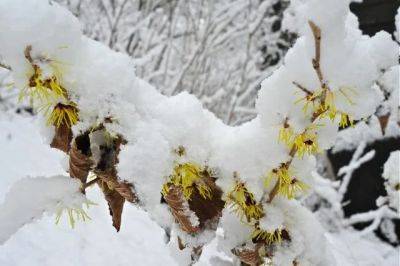
Spring or winter: which is it this funny february?
SPRING OR WINTER? Who knows–certainly not the garden, or the weather, which is running hot-and-cold, literally, as it has all “winter” long. The last week or so has seen the first bulbs, a snowstorm (something we haven’t had but once or twice this season–just ask my unused snow shovel), and a lot of buds on early blooming shrubs daring to swell and shake off their protective coverings, despite my telling them “No, don’t do it!” A little slideshow of the vagaries of this non-February.

My garden chores: february 2011
NEW BEGINNINGS, ALMOST: The last bit of winter’s the hardest, to my mind, with patience wearing thin (wish some icy spots would wear thin, instead). Getting ready for seed-starting action provides a distraction, and one could always order a few more packets to soothe the soul. I recently updates my list of favorite sources, and not long ago, readers shared their favorite seed catalogs, too.DID YOU DO YOUR germination testing yet to see what leftovers are still viable? And do you have a light stand to grow your seedlings on (my big old seed-starter stand plan is here; I got a small newer one made last year). Here’s my new chart on how long seeds last, by the way.OR TRY THIS ESCAPE: Force branches of spring-blooming shrubs and trees like pussy willow, forsythia, apple and cherry once buds have begun to swell. Cut on an angle or better yet hammer the ends of stems to make for better water uptake, and put indoors in water. I submerge them over

My february 2012 garden chores
I AM TEMPTED TO POST THE APRIL CHORES today instead of February, after waking up to near-50 degree temperatures yet again in this wacky nonwinter we’re having here. I could certainly get out and start fruit-tree and grape pruning, raking and ornamental grass cutbacks…and without a coat or gloves, even…but first, some planning is in order.

The february garden chores: 2013
Spring is coming; you can feel it, even here in Zone 5B where the intermediate witch-hazels were trying to bloom despite single-digit F temperatures that rolled the rhododendron leaves up tight as cigars as January wound down. Brrrr! But oh, the luxury of it: Fiat lux! (Let there be light!) Like this:On the last day of December where I live, the day was only 9 hours 16 minutes 18 seconds long; by January 31, it was 9 hours 57 minutes 20 seconds, and February 28 promises me an embarrassment of light: 11 hours 11 minutes 42 seconds. (Calculate your daylength for any day of any year here.)I’m stifling the urge to start ordering plants before I do some planning—reviewing the 2012 garden in my photo library and any notes, trying to match my purchases to what the garden really needs most–not sho

My garden chores for february 2014
First, about that astronomical provocateur, the sun: On the last day of December where I live, the day was only 9 hours 6 minutes 8 seconds long; by February 1, it was 9 hours 59 minutes 7 seconds, and February 28 promises me an embarrassment of light: 11 hours 11 minutes 1 second. (Calculate your daylength for any day of any year here.)Rushing around right now can be harmful, including to the soil. Keep feet on mulch, stone or gravel paths—off the lawns and out of beds—if thaws prove warm enough to soften the ground. Mucking around in mud is a no-no, and honestly, I don’t even walk on frozen lawn grass unless I must.In the January chores, I reminded us to start by looking backward, remember? It’s impossible to make a good garden plan for the year to come wi

February garden chores
Some stats on that astronomical provocateur, the sun: On the last day of December where I live, the day was only 9 hours 5 minutes 57 seconds long; by February 1, it was 9:58:33, and February 28 promises me an embarrassment of light: 11:10:19. (Calculate your daylength for any day of any year here.)Rushing around right now can be harmful, including to the soil. Keep feet on mulch, stone or gravel paths—off the lawns and out of beds—if thaws prove warm enough to soften the ground. Mucking around in mud is a no-no, and honestly, I don’t even walk on frozen lawn grass unless I must.My top tip: Don’t! (Don’t rush, I mean.) A short, stout, sturdy 6-week-old tomato transplant (or anything else) is better th

The february garden chores
Some stats on that astronomical provocateur, the sun: On the last day of December 2022 where I live, the day was only 9 hours 9 minutes 36 seconds long; by February 1, 2023, it is 10:01:09, and February 28 promises me an embarrassment of light: 11:12:32. (Calculate your daylength for any day of any year here.)Rushing around right now can be harmful, including to the soil. Keep feet on mulch, stone or gravel paths—off the lawns and out of beds—if thaws prove warm enough to soften the ground. Mucking around in mud is a no-no, and honestly, I don’t even walk on frozen lawn grass unless I must.Some years in February I get lucky, and a sunny day or two coincides with firm soil underfoot, and I can get started cutting back the hellebore
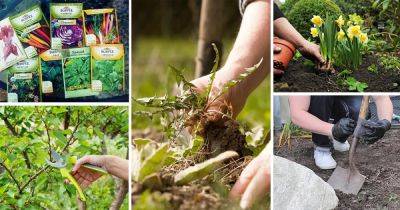
Do 10 Things in February To Have a Great Garden in Spring | February Gardening
USDA Plant Hardiness Zones are based on the temperature conditions of the place. They range from zones 1a to 13b. Most of the United States comprises zone 3a, which has a low temperature of around -40 and -35 degrees (F), and zone 8a, with 10 to 15 degrees. Outdoor gardening is on hold as by December, most annual plants have finished their cycles and been taken up, and many perennials are dormant.
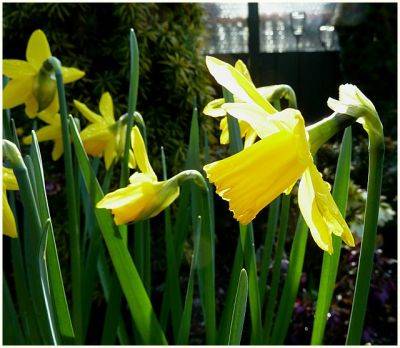
Daffodil February Gold
After planting bulbs of the Daffodil February Gold last Autumn, I thought I was being rather optimistic in expecting them to live up to their title.
- 1
- 2
Popular Topics
Our site greengrove.cc offers you to spend great time reading February latest Tips & Guides. Enjoy scrolling February Tips & Guides to learn more. Stay tuned following daily updates of February hacks and apply them in your real life. Be sure, you won’t regret entering the site once, because here you will find a lot of useful February stuff that will help you a lot in your daily life! Check it out yourself!
